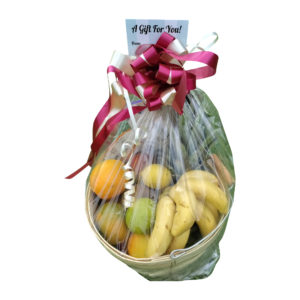Organic Fruit Tree Pest and Disease Control

Growing organic fruits can be easy but also difficult, depending on many different factors including the type of fruit, the geographical location, the terrain, the weather (rain), nutrition in the soil, and so on. In particular, pests, fungus, and diseases are the main problems when growing organic fruits.
Pests – There are so many pests that they are too many to mention. But, the biggest problems are classified in main 3 categories: Soil Dwelling, Topical Pests (bugs, lizards, squirrels, etc.), and Fungus or Diseases.
Soil Dwelling Pests – We need to mention everyone’s number 1 enemy: Nematodes in the soil. These are pests that eat the roots of the plant, limit fruit production, and inevitably kill the plant. However, keep in mind, there are also beneficial Nematodes that eat the larvae of other pests, like bugs that lay their eggs in the soil (yes, I’m looking at you Leaf Notching Weevils). Nematodes live in the sandy soils of Florida and several other fruit growing areas. For the home gardener, you can avoid these pests by growing in containers. For organic growers, they are hard to kill and we always fight the good fight, but never spray poisons and destroy our good growing soil.
Another soil dwelling pest would be a Mole, for example. These pests are rodent-like creatures that burrow into the ground and basically eat your plants. They are not as big a problem in the south as they are in the north of the USA. However, we have an alternately destructive topical pest, the Iguana, which we’ll talk about in a moment.
Topical Pests – Growing organic fruits, specifically in Florida, presents a big problem when it comes to topical pests or “critters” and “bugs”. These pests have ferocious appetites and never seem to cease attacking and eating.
Starting with the largest pests, Raccoons, Possums, the large lizards or Iguanas, certain Birds, Squirrels, etc. are relatively easy to control, but will also do the most damage if you don’t prevent them from access to your fruits.
Mostly, protecting the trunk of a tree with aluminum flashing is the best way to limit them from getting up into the trees fruiting area. Another is netting, especially for birds of flight, to keep them from harvesting your ripe fruits. Somehow, nature knows when your fruits are ready to be harvested and it’s usually right before you get there.
What’s worse than “critters” is bugs like beetles, snails, grasshoppers, weevils, Thrips, etc. Bugs of all kinds love plants and trees and they will be your fruits demise if not kept in check. So, what can an Organic Farmer do? Well, you can start by getting some beneficial bugs like Ladybugs and Praying Mantises. These are carnivorous bugs that eat pesky bugs. This is the best organic solution for some the topical pests.
Then, introduce spraying oils and soaps. This is a common way to ward off common pest and the most natural way to keep a lot of bugs from enjoying your plants and trees. You can try spraying Neem oil, which a lot of bugs hate. If you’ve got a more persistent infestation of bugs, you can try organic pesticides like spraying Ecotrol, an organic pesticide consisting of mostly Oregano Oil. It is very expensive but also very effective.
Keep in mind that there are some bugs that spraying won’t help and it just won’t do the trick. For example, there’s no spray or cure for Citrus Greening just yet. There’s another pest that affects the Avocado tree, called Laurel Wilt. This is the Ambrosia Beetle’s larvae which burrows into the trunk of the tree and passes from tree to tree in the rooting system potentially killing off full groves of trees. Again, there’s no spray or cure for this just yet. Unfortunately, amputation, so far, is the only way to potentially save the tree.
White fly, Aphids, Scale, and Spider Mites are many other common nasty bugs that will infest your plants and will never leave unless you “get after them.” With over 7,700 species of Thrips, they are an invasive bug that can devastate entire plant crops or infest flowers that should become fruits (but don’t). Go with pruning, soaps, or diatomaceous earth (DE) to get rid of those little buggers.
We can go on and on about the many topical pests that challenge the Organic Farmer and the methodical eradication processes, but you’ll just have to attack the problem one bug at a time with soaps, oils (never spray oils in the daytime or you’ll burn the plant), DE, and organic insecticide sprays.
Fungus or Diseases – This is one of the worst problems that challenge the organic fruit grower. Florida is like a giant petri dish for funguses and molds. However, mushrooms thrive in this environment, which is actually good for mushrooms farmers. The majority of viruses, fungi, and bacteria that can cause diseases in plants are listed herewith:
Armillaria Rot – The good news is there are plants that are resistant, including Persimmon, Mulberry, and Figs
Bacteria – Approximately 170 species of bacteria are known to cause diseases in plants and trees which can limit your fruit crops.
Citrus Greening – (HLB) is a bacteria spread by Psyllids and is a worldwide plant and tree pandemic. There is currently no cure.
Powdery Mildew and Funguses – The humidity in Florida is an ideal condition for these pests. Keep an eye out for them and treat immediately upon notice.
Our advice for gardeners and potential Organic Farmers is to grow what grows easier to avoid the potential devastation of your crops. Here are some of the many varieties that should do well on their own without much intervention to help: Mango, Papaya, Coconut, Banana (grow many different cultures to avoid one of them getting diseased and destroying all your trees), Starfruit, Longans, Dragon fruit, Kale, Okra, Zucchini and a few others.
Good luck with the advice, be a happy grower!


